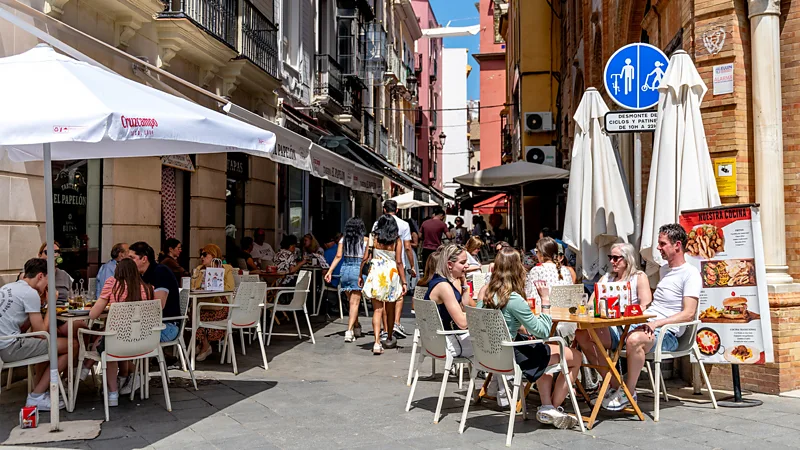Since TikTok showed us that we can hack the system to have five days off on two days of leave, it is becoming a trend among workers to squeeze in a few meetings while they’re on the go, so travel-related work has definitely changed.
A great example was when, in August of 2024, the director of a viral tourism advert for Oslo, in an interview, said that he would `much rather sit at someone’s kitchen sobering and drink milk instead of hopping in and out of tourist attractions’ but then again this is the year when Oslo and Norway, in general, went all out on tourism. It is hard to disagree that tourism went out of hand, and many destinations were already suffering from bad traveler behavior and excessive over-tourism. However, the pandemic did not demolish the need to travel, and according to analysts on the travel market, in 2025, people will be planning their trips in a way to stay as long as possible, trying to make the best out of one location.
A report by Skift Research predicts that for the next year, there will be an increase of 24% in the number of trips planned, especially when compared to 2024. Long vacations are still the preferred choice of travel in all of the countries, especially when compared to weekend getaways and road trips. Skift Research even went as far as predicting that 2025 will be the “long getaways” year. Germany, Indian and Chinese regions are expected to notice a strong increase in long vacations. As for the US, a quarter of the locals have reported taking a long overseas or intercontinental vacation. A greater percentage has reported that they tend to take economic options instead.

“Tourists have shifted away from just taking pictures at famous hotels or heavily crowded tourist sites. In other words, they don’t do that anymore,” remarked Julia Carter, head of the luxury travel company Craft Travel. “Today, however, they do understand more and more that a place only comes alive when one is at the destination.”
This is a phenomenon that has been compounded in a luxury travel context, where the average trip duration is now approaching two weeks. That’s according to the Luxury Travel Report by Zicasso, another luxury travel planning firm. Brian Tan, the founder and CEO of the company: “[We’ve] observed an overall increase of the average length of travel to approximately 13.5 days. We have also observed a growing tendency for the customers to take what we call a single destination trip, where the travelers spend more time within a particular culture, rather than a multi-country one.” It may have been a slow progression for what the report terms as “trend toward depth over breadth in travel experiences” such as the 2024 average of 13.4 days, 13.5 days in 2025 was a noticeable shift.
If, for instance, pausing for a photoshoot at an eye-catching location or popping into a tranquil cafe amid a busy work schedule is regarded as depth, then according to Skift’s report, there is a steady rise in what is referred to as ‘blended travel’: travel that combines both work and leisure, in other words, ‘leisure Travel’ selling point.
India leads developing countries with the percentage of respondents planning such travel, where 92% of people are in favor, followed by China with 84%. Germany comes next with regards to combining travel for work and relaxing (79% of respondents there would like to do this in 2025), followed by the US and the UK (both 72%).
Thus, as for travel itself, Skift observes that among the countries on the list of places that Americans would most like to visit this year, England, Japan, Paris, Italy and Mexico is number one. In contrast, residents in the UK would like to visit Dubai, then Paris, Italy, Spain and the US.

They might also utilize the viral phenomenon known as ‘PTO hacking’ by devising use-it-or-lose-it travel hacks to vacation for more extended periods in more desired locations. Videos demonstrating how to maximize travel in 2025 have become viral gifs on TikTok, alongside other templates that explain how certain days worked perfectly to expand vacation time. But in essence, it allows them not to waste their leave because, in countries like the US, full-time employers are granted roughly 11 paid time off vacation days in a year. Travel & Leisure shares how to turn those 11 days into 44 travel days, and Forbes helps their clients who have 15 leave days per year to spend 55 days.
Paul Charles, who is CEO of The PC Agency, which is a travel trade marketing and PR consultant company, expresses how these trips: ‘Many are also using the paid holidays to their advantage and planning vacations around them like the Labor extravaganza,’ Senior VP for Singapore tourism bureau, Patrick P. notes.
“Carriers have also been widening their offerings if one chooses to fly out of the country during the public holidays. This seems like a strategy to bring Americans out of the country and not limit traveling during the specified public holidays.” Zicasso also mentions in their report an increased propensity among travelers to book shoulder season trips in 2025, potentially targeting spring periods, even the long weekend around Memorial Day and autumn, unlike before when the summer season was favored the most.
One such traveler is Carolina Santos, a US-based wellness entrepreneur hailing from Colombia, who fondly remembers her long voyages to Nepal and India. “Long vacations enable me to engage in deeper Turkish culture by initiating longer discussions with the locals about their lives, customs and traditions.”, she explained. “This enables me to travel more freely instead of being chased around by schedules or strict timetables. Each day is a new one, and I get to experience the different daily lives of different cities.”
